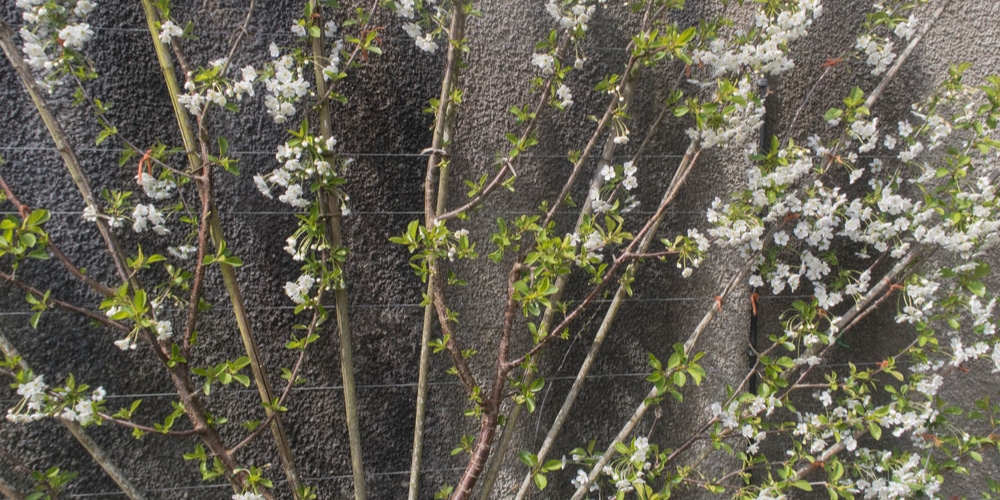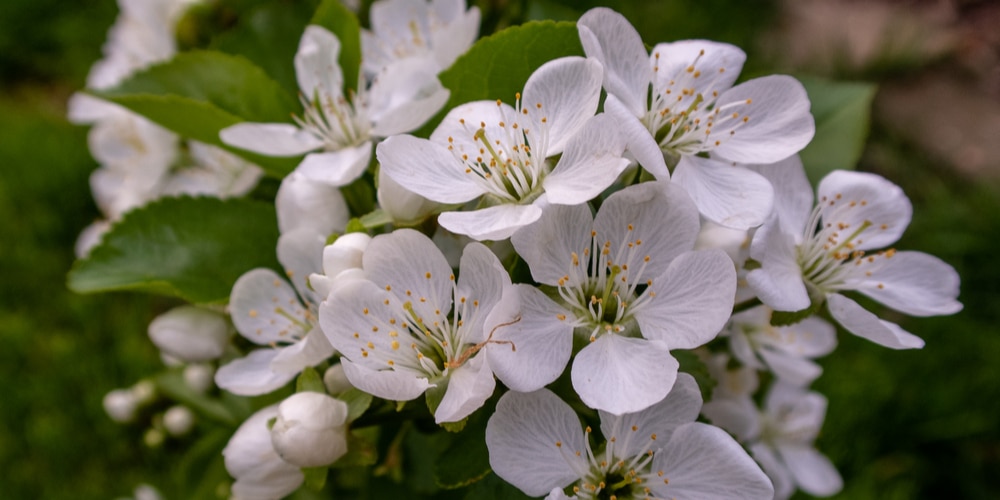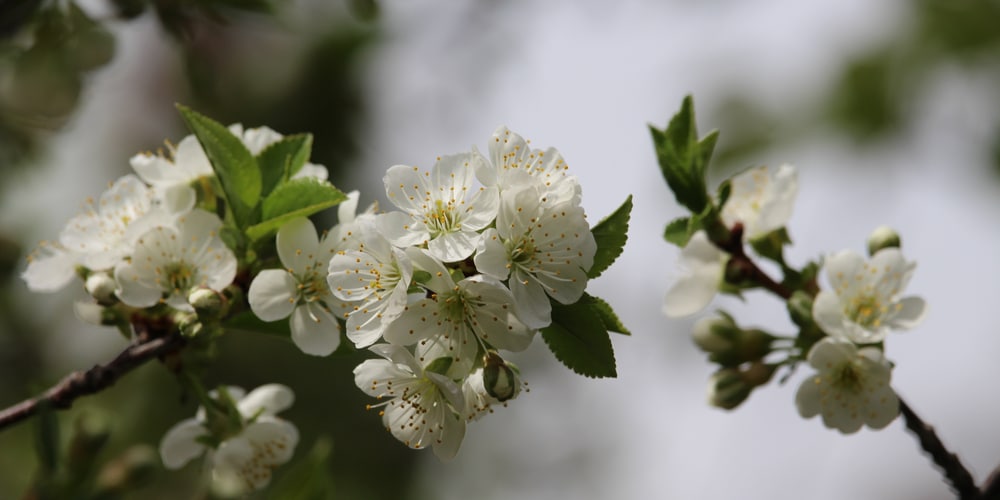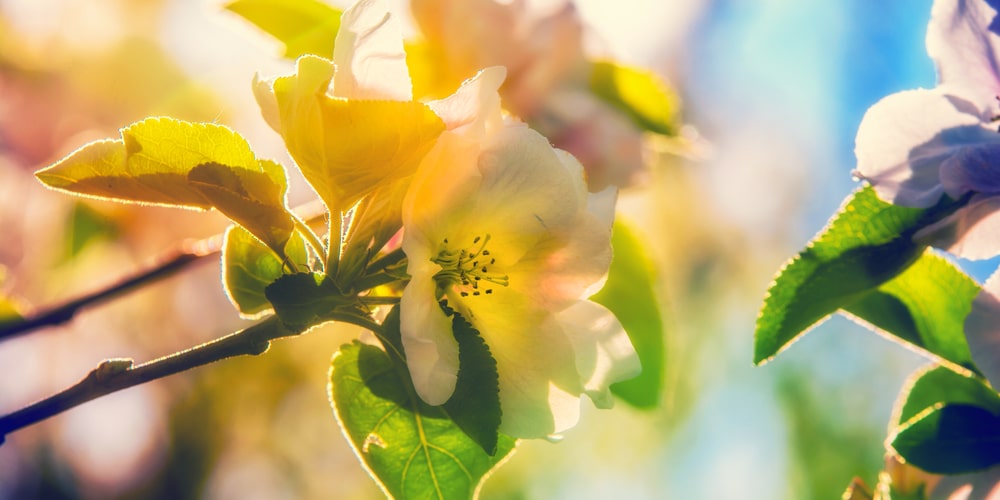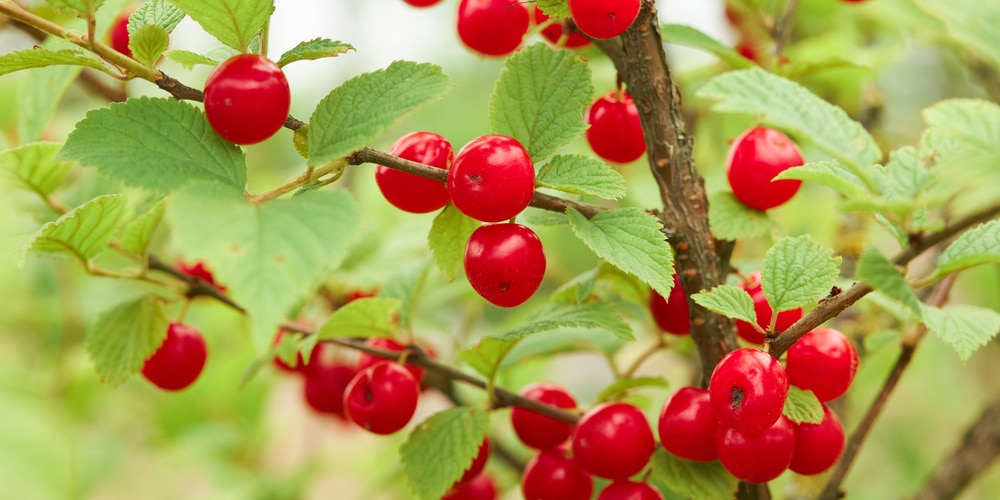hen planting a cherry tree in zone 4, it’s best to choose a cold-hardy variety from the start. Thankfully, there are not just one but seven cherry tree types that are able to thrive in a cold climate. Check out our list of zone 4 cherry trees below.
Zone 4 Cherry Trees
Montmorency
The ‘Montmorency’ cherry tree got its name from the Montmorency Valley in France. It’s a sour-type, semi-dwarf cherry that’s widely used in commercial aspects, and a truly versatile and adaptable plant that can thrive in different growing conditions.
This variety of cherry can definitely grow in USDA hardiness zone 4 and only requires full sunlight and loamy yet well-draining soil. What’s great about Montmorency is that it produces big, bright red and tart fruits early and is an excellent source for preserves. To get the most of this tree you’ll probably need a second or third one.
English Morello
English Morello is a dwarf type and self-fruiting tree that’s cold hardy in regions 4 through 9.
Sunlight is definitely a must, as is rich and moist soil that drains well. It takes pruning well and can reach a maximum height of 20 feet and achieve a 30-foot spread when left alone. This cherry type produces fruit late in the season but it’s usually worth the wait.
The Morello’s dark red fruit has a sour flavor but it’s versatile enough to be used as a jam, preserved or made into cherry pies.
Romeo
Romeo is just one of the three products of the University of Saskatchewan, alongside Carmine Jewel and Juliet in terms of cold-hardy cherries with a sweet flavor. It can thrive in USDA hardiness zones 3 through 9 and is a vigorous fruiter when mature.
The dwarf tree requires full sun and rich, well-draining soil and will expand to a maximum height of 6 feet and 8 feet in terms of spread and height, respectively. The fruit it produces is not as sweet as the Juliet variety, but you can use it to make wine, pies and even eaten fresh.
Canada Red Select
If you want something that will stick around for a long time, then Canada Red Select is the one to get. Technically speaking, it’s a variant of chokeberry with fruits that look similar to cherries.
Canada Red Select is so hardy that it can survive in zones 2 to 7. You won’t need to do anything else come winter time and expect it to come back as hale and hearty as ever. The berry is more tart than traditional cherries but you can turn them into tasty jelly or wine with a bit of sugar. Make sure to remove the pits before eating them.
Also, you’ll need quite a bit of space to grow this variety, as it can reach up to 25 feet tall and 20 feet wide.
Carmine Jewel
A hybrid dwarf species that’s a cross of Mongolian and sour cherries, Carmine Jewel is tough enough to survive minus temperatures in zones 3 through 8.
Being a dwarf variety, this cherry tree grows only to a maximum height of 7 feet and achieves spreads of 8 feet. It’s also a self-pollinator, which means you only need one in your yard or garden to get started.
Carmine Jewel shines in zone 4 gardens with limited space. It can be used as a landscape feature and in a variety of cherry-based foods.
Early Richmond
Early Richmond has been around since the 1500s, being brought by English settlers during the time. It’s a sour cherry type that’s adapted to grow in zone 4 and can tolerate drought conditions.
The semi-dwarf plant is also self-pollinating so you won’t need to plant another type nearby. It’s tall and requires a bit of pruning so you can reach the fruits without having to climb. The cherries of Early Richmond are great for baking, preserving and cooking.
Nanking
Nanking is classified as a hedge shrub and grows relatively close to the ground. It goes by the names Manchu and Chinese bush and can reach heights of 10 feet when fully grown.
You can plant Nanking cherries close to each other to form a wall. It grows in any soil type but prefers a rich and well-draining one. It blooms early and starts fruiting in mid-summer. This cherry tree might need another tree for optimal harvest.

